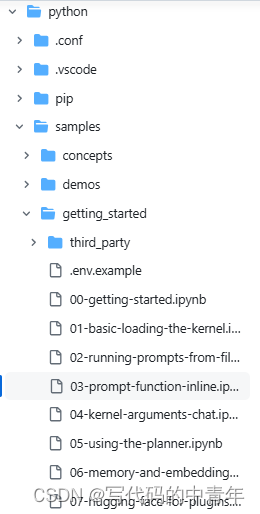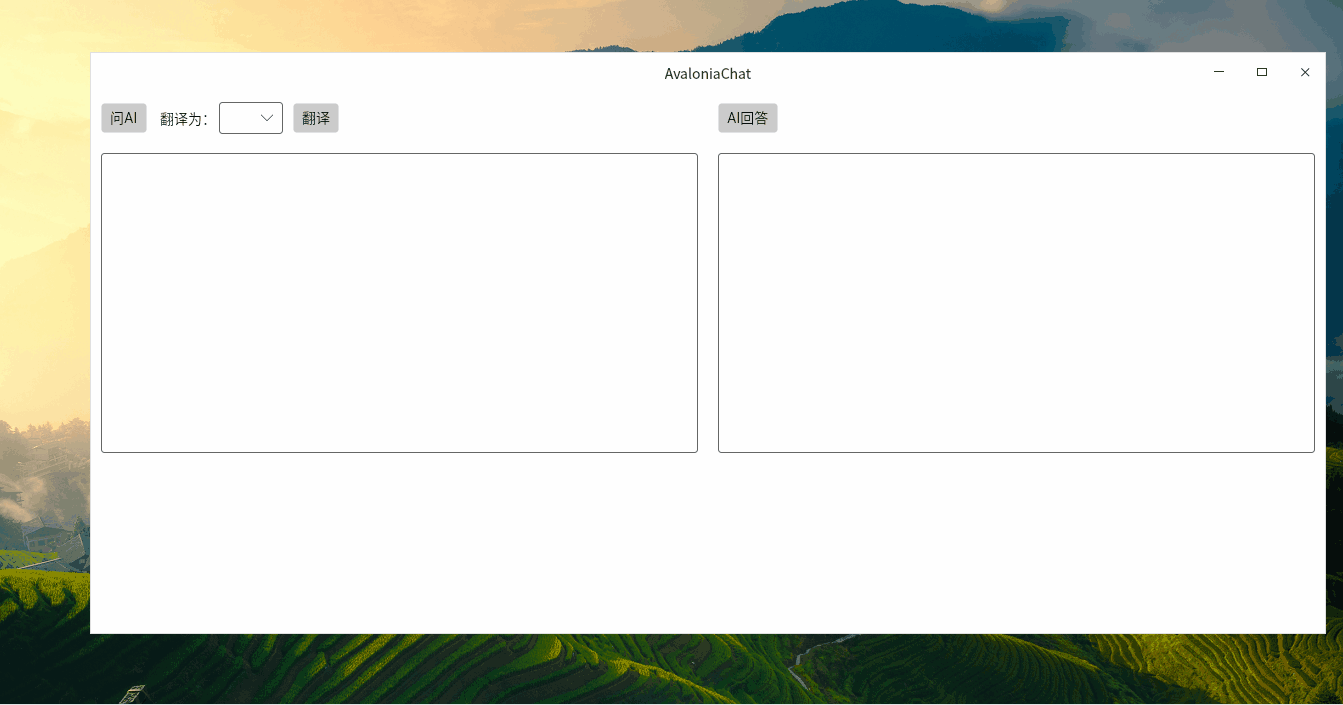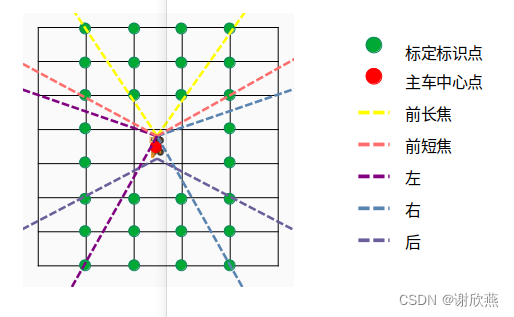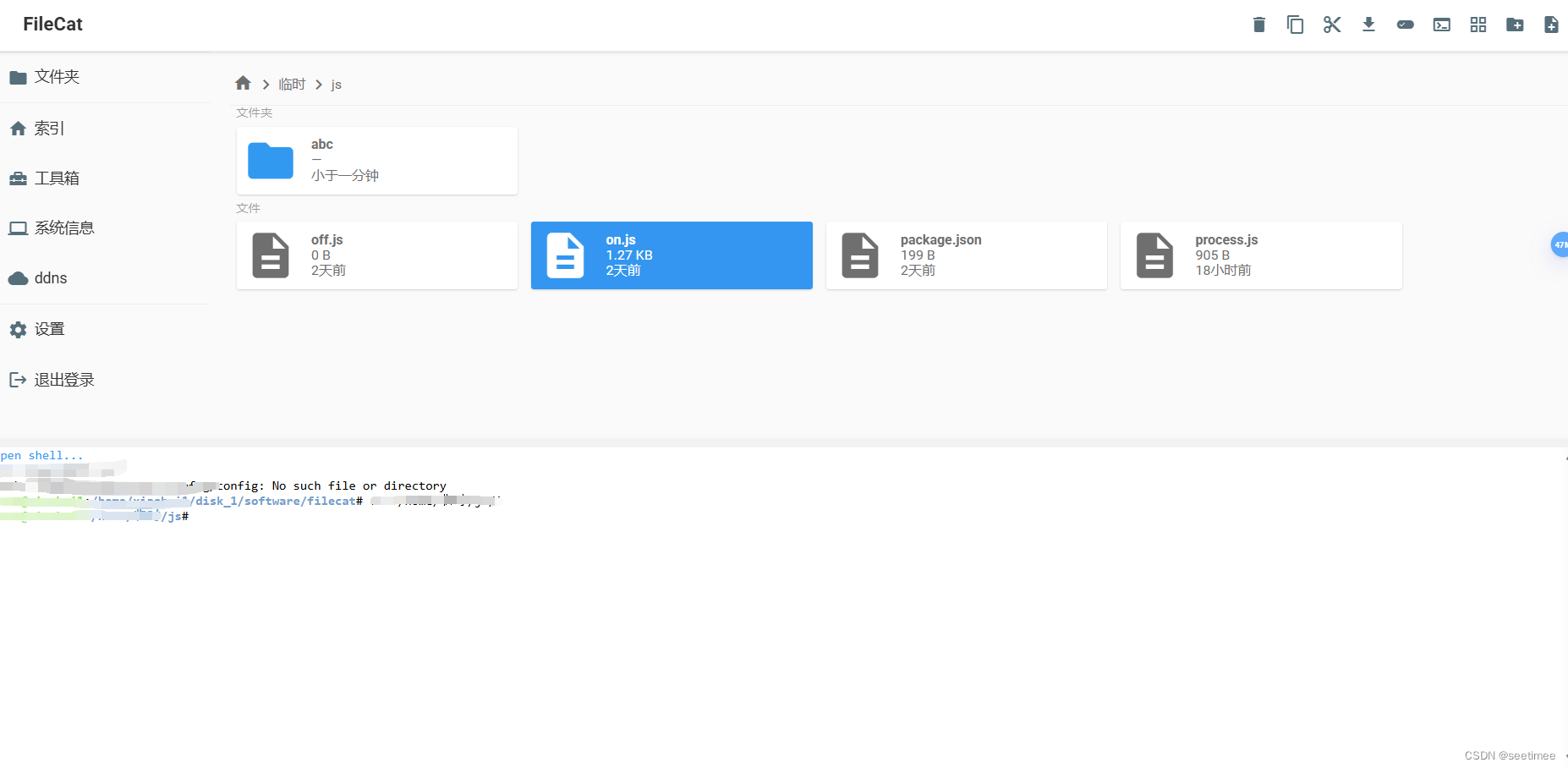大模型相关目录
大模型,包括部署微调prompt/Agent应用开发、知识库增强、数据库增强、知识图谱增强、自然语言处理、多模态等大模型应用开发内容
从0起步,扬帆起航。
- 基于Dify的QA数据集构建(附代码)
- Qwen-2-7B和GLM-4-9B:大模型届的比亚迪秦L
- 文擎毕昇和Dify:大模型开发平台模式对比
- Qwen-VL图文多模态大模型微调指南
- 从零开始的Ollama指南:部署私域大模型
- 基于Dify的智能分类方案:大模型结合KNN算法(附代码)
- OpenCompass:大模型测评工具
- 一文读懂多模态大模型基础架构
- 大模型管理平台:one-api使用指南
- 大模型RAG、ROG、RCG概念科普
- RAGOnMedicalKG:大模型结合知识图谱的RAG实现
- DSPy:变革式大模型应用开发
- 最简明的Few-shot Prompt指南
- Semantic Kernel:微软大模型开发框架——LangChain 替代
文章目录
- 大模型相关目录
- Semantic Kernel介绍
- 与Langchain对比
- 部署使用
Semantic Kernel介绍
Semantic Kernel:一个集成大型语言模型 (LLM) 的 SDK,如 OpenAI、Azure OpenAI、 以及使用 C#、Python 和 Java 等传统编程语言的 Hugging Face。语义内核实现了这一点 通过允许您定义可以链接在一起的插件 只需几行代码。
然而,语义内核的特别之处在于它能够自动编排 带有 AI 的插件。使用语义内核规划器,您可以 可以要求 LLM 生成实现用户唯一目标的计划。之后 语义内核将为用户执行计划。
Semantic Kernel 的主要特点:
• 灵活的插件架构: 允许开发者定义可以链接在一起的插件,仅需几行代码 即可实现复杂的功能。
• AI 驱动的插件编排: 可以使用 Semantic Kernel 规划器 让 LLM 生成一个计划来实现用户的独特目标,然后 Semantic Kernel 将为用户执行该计划。
• 多语言支持: 支持 C#、Python 和 Java 编程语言,方便不同技术背景的开发者使用。

与Langchain对比
LangChain 作为一款备受欢迎的 AI 应用开发框架,凭借其丰富的预制组件和易用性,吸引了众多开发者的目光。然而,微软开源的 Semantic Kernel 框架以其独特的优势和强大的功能,为开发者带来了全新的选择,或将成为 LangChain 的有力竞争者。

部署使用
项目开源地址:
python">https://github.com/microsoft/semantic-kernel
python教程:
python">https://github.com/microsoft/semantic-kernel/blob/main/python/samples/getting_started/03-prompt-function-inline.ipynb

安装最新软件包:
python">python -m pip install --upgrade semantic-kernel
如果要使用一些可选依赖项(默认安装 OpenAI),可以使用以下命令进行安装:
python">python -m pip install --upgrade semantic-kernel[hugging_face]
或全部:
python">python -m pip install --upgrade semantic-kernel[all]
使用示例:
python">import asyncio
from semantic_kernel importKernel
from semantic_kernel.functions import kernel_function
from semantic_kernel.connectors.ai.open_ai importAzureChatCompletion
from semantic_kernel.connectors.ai.function_call_behavior importFunctionCallBehavior
from semantic_kernel.connectors.ai.chat_completion_client_base importChatCompletionClientBase
from semantic_kernel.contents.chat_history importChatHistory
from semantic_kernel.functions.kernel_arguments importKernelArguments
from semantic_kernel.connectors.ai.open_ai.prompt_execution_settings.azure_chat_prompt_execution_settings import(
AzureChatPromptExecutionSettings,
)
asyncdefmain():
# Initialize the kernel
kernel =Kernel()
# Add Azure OpenAI chat completion
kernel.add_service(AzureChatCompletion(
deployment_name="your_models_deployment_name",
api_key="your_api_key",
base_url="your_base_url",
))
# Set the logging level for semantic_kernel.kernel to DEBUG.
logging.basicConfig(
format="[%(asctime)s - %(name)s:%(lineno)d - %(levelname)s] %(message)s",
datefmt="%Y-%m-%d %H:%M:%S",
)
logging.getLogger("kernel").setLevel(logging.DEBUG)
# Add a plugin (the LightsPlugin class is defined below)
kernel.add_plugin(
LightsPlugin(),
plugin_name="Lights",
)
chat_completion :AzureChatCompletion= kernel.get_service(type=ChatCompletionClientBase)
# Enable planning
execution_settings =AzureChatPromptExecutionSettings(tool_choice="auto")
execution_settings.function_call_behavior =FunctionCallBehavior.EnableFunctions(auto_invoke=True, filters={})
# Create a history of the conversation
history =ChatHistory()
# Initiate a back-and-forth chat
userInput =None
whileTrue:
# Collect user input
userInput =input("User > ")
# Terminate the loop if the user says "exit"
if userInput =="exit":
break
# Add user input to the history
history.add_user_message(userInput)
# Get the response from the AI
result =(await chat_completion.get_chat_message_contents(
chat_history=history,
settings=execution_settings,
kernel=kernel,
arguments=KernelArguments(),
))[0]
# Print the results
print("Assistant > "+str(result))
# Add the message from the agent to the chat history
history.add_message(result)
# Run the main function
if __name__ =="__main__":
asyncio.run(main())





